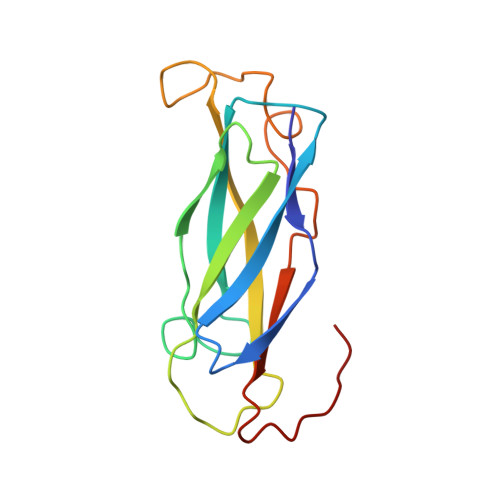Ca(2+) regulation in the na(+)/ca(2+) exchanger involves two markedly different ca(2+) sensors
Hilge, M., Aelen, J., Vuister, G.W.(2006) Mol Cell 22: 15-25
- PubMed: 16600866
- DOI: https://doi.org/10.1016/j.molcel.2006.03.008
- Primary Citation of Related Structures:
2FWS, 2FWU - PubMed Abstract:
The plasma membrane Na+/Ca2+ exchanger (NCX) is almost certainly the major Ca2+ extrusion mechanism in cardiac myocytes. Binding of Na+ and Ca2+ ions to its large cytosolic loop regulates ion transport of the exchanger. We determined the solution structures of two Ca2+ binding domains (CBD1 and CBD2) that, together with an alpha-catenin-like domain (CLD), form the regulatory exchanger loop. CBD1 and CBD2 are very similar in the Ca2+ bound state and describe the Calx-beta motif. Strikingly, in the absence of Ca2+, the upper half of CBD1 unfolds while CBD2 maintains its structural integrity. Together with a 7-fold higher affinity for Ca2+, this suggests that CBD1 is the primary Ca2+ sensor. Specific point mutations in either domain largely allow the interchange of their functionality and uncover the mechanism underlying Ca2+ sensing in NCX.
Organizational Affiliation:
Department of Biophysical Chemistry, Institute for Molecules and Materials, Radboud University Nijmegen, Toernooiveld 1, 6525 ED Nijmegen, The Netherlands. m.hilge@nki.nl















